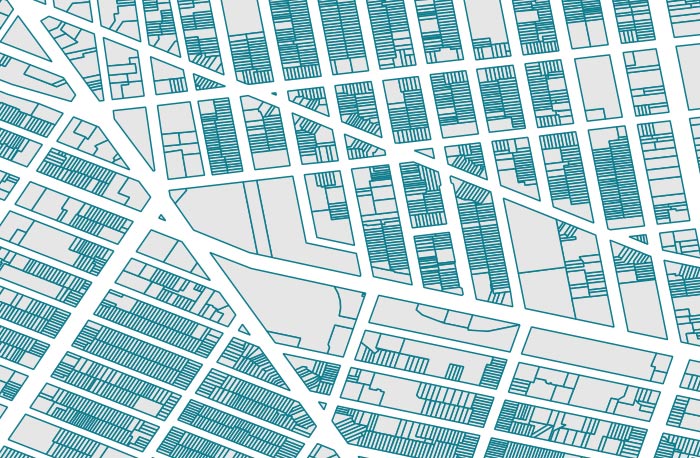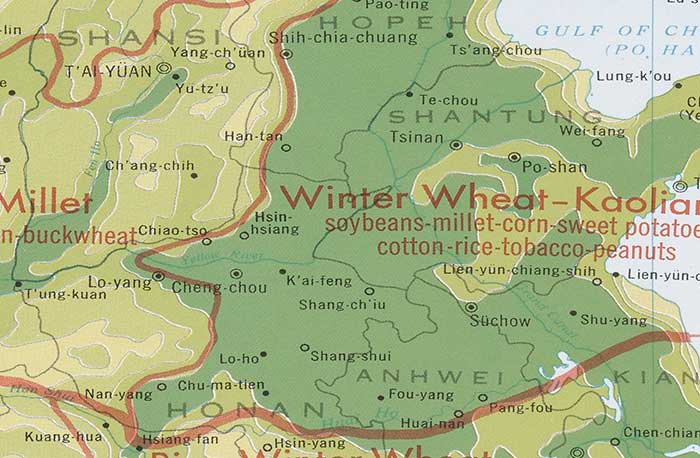View Metadata
United States Non-Attainment Areas: Particulate Matter 10, 2008
- Identification Information
- Data Quality Information
- Spatial Data Organization Information
- Spatial Reference Information
- Entity and Attribute Information
- Distribution Information
- Metadata Reference Information
- Identification Information
- Citation
- Originator
- Research and Innovative Technology Administration's Bureau of Transportation Statistics (RITA/BTS)
- Originator
- Federal Highway Administration, Office of Planning, HEPP-1
- Publication Date
- 2006
- Title
- United States Non-Attainment Areas: Particulate Matter 10, 2008
- Geospatial Data Presentation Form
- vector digital data
- Publication Information
- Publication Place
- Washington, DC
- Publisher
- Research and Innovative Technology Administration's Bureau of Transportation Statistics (RITA/BTS)
- Online Linkage
- http://www.columbia.edu/acis/eds/gis/images/ntad_2008_naa_pm10.zip
- Abstract
- Non-Attainment Areas: Particulate matter 10 is a polygon theme representing areas in the United States that do not meet the National Ambient Air Quality Standard for PM-10: particle matter with an aerodynamic diameter smaller than 10 micrometers.
- Purpose
- To establish the spatial boundaries of each nonattainment and maintenance area.
- Temporal Extent
- Currentness Reference
- publication date
- Time Instant
- 2008
- Bounding Box
- West
- -149.581463
- East
- -66.088356
- North
- 61.338516
- South
- 18.332748
- Theme Keyword
- environment
- Theme Keyword Thesaurus
- ISO 19115 Topic Categories
- Theme Keyword
- Nonattainment area
- Maintenance area
- Criteria Pollutant
- Particulate Matter
- Air Quality
- Theme Keyword Thesaurus
- None
- Place Keyword
- United States
- Place Keyword Thesaurus
- Library of Congress Subject Headings
- Temporal Keyword
- 2008
- Temporal Keyword Thesaurus
- None
- Access Restrictions
- None
- Use Restrictions
- None
- Status
- Complete
- Maintenance and Update Frequency
- Annually
- Point of Contact
- Contact Organization
- Research and Innovative Technology Administration's Bureau of Transportation Statistics (RITA/BTS)
- Delivery Point
- 1200 New Jersey Ave., SE
- City
- Washington
- State
- DC
- Postal Code
- 20590
- Country
- USA
- Contact Telephone
- 1 202 366 DATA
- Contact Electronic Mail Address
- answers@bts.gov
- Native Data Set Environment
- Microsoft Windows XP Version 5.1 (Build 2600) Service Pack 2; ESRI ArcCatalog 9.1.0.722
- Cross-Reference
- Originator
- Research and Innovative Technology Administration's Bureau of Transportation Statistics (RITA/BTS)
- Publication Date
- 2008
- Title
- National Transportation Atlas Databases (NTAD) 2008
- Geospatial Data Presentation Form
- vector digital data
- Publication Information
- Publication Place
- Washington, DC
- Publisher
- Research and Innovative Technology Administration's Bureau of Transportation Statistics (RITA/BTS)
- Online Linkage
- http://www.bts.gov/programs/geographic_information_services/
- Data Quality Information
- Attribute Accuracy Report
- Unknown
- Quantitative Attribute Accuracy Assessment
- Logical Consistency Report
- None
- Completeness Report
- Unknown
- Horizontal Positional Accuracy Report
- Unknown
- Quantitative Horizontal Positional Accuracy Assessment
- Lineage
- Source
- Publication Date
- 2005
- Title
- 40 Code of Federal Regulations Part 81
- Other Citation Details
- The spatial boundaries of each nonattainment and maintenance area are defined in 40 Code of Federal Regulations Part 81.
- Online Linkage
- http://www.epa.gov/epahome/cfr40.htm
- Source Temporal Extent
- Time Period Information
- Single Date/Time
- Calendar Date
- 2005
- Source Currentness Reference
- publication date
- Contribution
- The spatial boundaries of each nonattainment and maintenance area are defined in 40 Code of Federal Regulations Part 81.
- Source
- Originator
- U.S. Environmental Protection Agency
- Publication Date
- 2005
- Title
- Green Book
- Online Linkage
- http://www.epa.gov/oar/oaqps/greenbk/
- Source Temporal Extent
- Time Period Information
- Single Date/Time
- Calendar Date
- 2005
- Source Currentness Reference
- publication date
- Contribution
- The United States Environmental Protection Agency's (EPA) "Green Book" defines Criteria Pollutants. EPA uses six "criteria pollutants" as indicators of air quality, and has established for each of them a maximum concentration above which adverse effects on human health may occur. These threshold concentrations are called National Ambient Air Quality Standards (NAAQS).
- Spatial Data Organization Information
- Direct Spatial Reference Method
- Vector
- Point and Vector Object Information
- SDTS Terms Description
- SDTS Point and Vector Object Type
- G-polygon
- Point and Vector Object Count
- 86
- Spatial Reference Information
- Horizontal Coordinate System Definition
- Geographic
- Latitude Resolution
- 0.000001
- Longitude Resolution
- 0.000001
- Geographic Coordinate Units
- Decimal degrees
- Geodetic Model
- Horizontal Datum Name
- D_WGS_1984
- Ellipsoid Name
- WGS_1984
- Semi-major Axis
- 6378137.000000
- Denominator of Flattening Ratio
- 298.257224
- Vertical Coordinate System Definition
- Altitude System Definition
- Altitude Resolution
- 0.000010
- Altitude Encoding Method
- Explicit elevation coordinate included with horizontal coordinates
- Entity and Attribute Information
- Entity Type
- Entity Type Label
- naa_ma_pm10
- Entity Type Definition
- Non-Attainment Areas: Particulate Matter 10
- Entity Type Definition Source
- RITA/BTS
- Attributes
- FID
- Internal feature number. (Sequential unique whole numbers that are automatically generated.)
- Definition Source
- ESRI
- Shape
- Feature geometry. (Coordinates defining the features.)
- Definition Source
- ESRI
- ID
- Sequential Unique Identifier (Sequential unique whole numbers that are automatically generated.)
- Definition Source
- RITA/BTS
- AREA
- Area of the polygon (Numeric Value)
- Definition Source
- RITA/BTS
- AREA_NAME
- Name of the NAA as designated by the EPA (Character Value)
- Definition Source
- EPA
- STATE1
- Primary state in which NAA is found (Official List of U.S. Postal Code AbbreviationsU.S. Postal Service (USPS))
- Definition Source
- EPA
- EPA_REGION
- Primary EPA region in which the NAA is found (Official List of EPA Regions: http://www.epa.gov/epahome/locate2.htmU.S. Environmental Protection Agency (EPA))
- Definition Source
- EPA
- STATUS
- Current status of the area as designated by the EPA.
- Maintenance
- area is in maintenance status
- Nonattainment
- area is in nonattainment status
- Definition Source
- EPA
- CLASSIFICA
- Severity classification as identified by the EPA.
- Moderate
- moderate
- Serious
- serious
- Definition Source
- EPA
- ATTAINMENT
- Date or year in which the area received its current classification by the EPA. (date or year)
- Definition Source
- EPA
- COMMENTS
- Additional clarifying information on the status or characteristics of the area. (Character Value)
- Definition Source
- EPA
- STFIPS
- State FIPS code (FIPS (Federal Information Processing Standard) Pub 6-4National Institute for Standards and Technology (NIST))
- Definition Source
- RITA/BTS
- VERSION
- Version of the database (00 to 99)
- Definition Source
- RITA/BTS
- Entity and Attribute Overview
- Air pollutants called particulate matter include dust, dirt, soot, smoke and liquid droplets directly emitted into the air by sources such as factories, power plants, cars, construction activity, fires and natural windblown dust. Particles formed in the atmosphere by condensation or the transformation of emitted gases such as SO2 and VOCs are also considered particulate matter. Based on studies of human populations exposed to high concentrations of particles (sometimes in the presence of SO2) and laboratory studies of animals and humans, there are major effects of concern for human health. These include effects on breathing and respiratory symptoms, aggravation of existing respiratory and cardiovascular disease, alterations in the body's defense systems against foreign materials, damage to lung tissue, carcinogenesis and premature death. The major subgroups of the population that appear to be most sensitive to the effects of particulate matter include individuals with chronic obstructive pulmonary or cardiovascular disease or influenza, asthmatics, the elderly and children. Particulate matter also soils and damages materials, and is a major cause of visibility impairment in the United States. Annual and 24-hour National Ambient Air Quality Standards (NAAQS) for particulate matter were first set in 1971. Total suspended particulate (TSP) was the first indicator used to represent suspended particles in the ambient air. Since July 1, 1987, however, EPA has used the indicator PM-10, which includes only those particles with aerodynamic diameter smaller than 10 micrometers. These smaller particles are likely responsible for most of the adverse health effects of particulate matter because of their ability to reach the thoracic or lower regions of the respiratory tract. Title 40, Part 50 of the Code of the Federal Regulations lists the ambient air quality standard for particulate matter.
- Distribution Information
- Format Name
- geopackage
- Distributor
- Research and Innovative Technology Administration's Bureau of Transportation Statistics (RITA/BTS)
- Name
- Metadata Reference Information
- Metadata Date
- 20090601
- Metadata Contact
- Contact Information
- Contact Organization Primary
- Contact Organization
- Research Data Services (RDS), Columbia University Libraries
- Contact Person
- GIS/Metadata Librarian
- Contact Address
- Address
- 420 W. 118th St., 215 IAB, MC 3301
- City
- New York
- State or Province
- NY
- Postal Code
- 10027
- Country
- USA
- Contact Voice Telephone
- (212)854-6012
- Contact Electronic Mail Address
- data@library.columbia.edu
- Metadata Standard Name
- FGDC Content Standards for Digital Geospatial Metadata
- Metadata Standard Version
- FGDC-STD-001-1998


